- Home
- William W. Johnstone
Terror in the Ashes
Terror in the Ashes Read online
A GOOD NIGHT FOR KILLING
About an hour after dark, the Rebel team began to gather.
Ben had two 9mm Beretta pistols on his web belt and was carrying a Colt 9mm carbine, select fire. Cooper was carrying a Stoner 63 – a 5.56mm belt-fed machine-gun with a 150-round magazine. Jersey carried a CAR-15, select fire. Linda carried a Street-Sweeper, drum-type sawed-off 12-gauge shotgun that was truly awesome in any type of close-in combat. Corrie was carrying a very light packback radio and a CAR-15.
“You know where to go and what to do,” Ben said, and jacked a round into his CAR-15. “Move out!”
The Rebels began walking silently toward the darkened town. Only the faint outlines of the buildings were visible in the mist and fog of this quiet Irish night... that was about to turn deadly and bloody.
GREAT BOOKS,
GREAT SAVINGS!
When You Visit Our Website:
www.kensingtonbooks.com
You Can Save Money Off The Retail Price
Of Any Book You Purchase!
• All Your Favorite Kensington Authors
• New Releases & Timeless Classics
• Overnight Shipping Available
• eBooks Available For ManyTitles
• All Major Credit Cards Accepted
Visit Us Today To Start Saving!
www.kensingtonbooks.com
All Orders Are Subject To Availability.
Shipping and Handling Charges Apply.
Offers and Prices Subject To Change Without Notice.
TERROR IN THE ASHES
WILLIAM W. JOHNSTONE
PINNACLE BOOKS
Kensington Publishing Corp.
http://www.keusingtonbooks.com
All copyrighted material within is Attributor Protected.
Table of Contents
A GOOD NIGHT FOR KILLING
Title Page
Dedication
Book One
Prologue
One
Two
Three
Four
Five
Six
Seven
Eight
Nine
Ten
Eleven
Twelve
Thirteen
Fourteen
Fifteen
Sixteen
Seventeen
Book Two
One
Two
Three
Four
Five
Six
Seven
Eight
Nine
Ten
Eleven
Twelve
Thirteen
Fourteen
Fifteen
Sixteen
Seventeen
Copyright Page
Notes
Dedicated to John Cole.
Book One
We are so outnumbered there is only one thing to do. We must attack.
Sir Andrew Browne Cunningham
Prologue
Beginning in the last few years of the past millennium, a few months after the entire world was shaken and very nearly destroyed by germ warfare and limited nuclear war, one man rose out of the ashes of despair and with a few others of like mind began building a new society. This man was a walking contradiction. He was a visionary, a warrior, a philosopher, a teacher. He was so controversial that his own brother tried to kill him.
When a new government of the United States was hastily thrown together, the leaders declared this man an enemy and put a bounty on his head. The government destroyed the society he had built and thought they had killed him.
They were wrong.
Again this man rose out of the ashes and again he started building his army to fight the central government of the United States, now so corrupt and dictatorial some were comparing it to Hitler’s reign of terror decades past.
The central government called the freedom fighters scum and traitors and malcontents. Those who supported the efforts of the breakaways called them Rebels.
The Rebels wrested the power from those who had turned what had once been the greatest country in the world into no more than a prison camp. Then the sickness struck the land. No one knew where it came from or how to fight it. The sickness spread world-wide, and that was the last blow for an already reeling earth. When the tide of death had run its course, there was not one stable government left on earth.
Chaos was the order of the day. Robbery and rape and murder and enslavement and assault became commonplace. Outlaws and warlords took control. The world was suddenly plunged back into medieval thinking.
Except for a few hundred men and women called Rebels who had kept their heads down and their wits about them and who followed the teachings of one man.
The Rebels then began the job of clearing the nation of human crud and crap and restoring order. It would take them years to accomplish that. But accomplish it they did. They fought the Russian Striganov until he joined the Rebels. They fought the mercenary forces of a man called West until he, too, realized he was on the wrong side and joined the Rebels. The Rebels fought mutants and wackos, religious nuts and gangs that numbered in the thousands. Still the Rebels grew and conquered, taking back the land from the thugs and returning it to men and women who wanted to live in peace.
The Rebels fought Sister Voleta and her forces of evil and destroyed them all. They fought the international terrorist Khamsin and ground him and his thousands of troops under the heel of democracy. The Rebels fought the cannibalistic sect known as the Night People and wiped them from the face of America.
The Rebels cleared the countryside, then turned their massive war machine toward the great cities that still remained in the land of the free and the home of the brave that had once been called America.
Slowly but surely, in one bloody battle after another, the Rebels reclaimed the land. They systematically destroyed the decaying cities and the lawless gangs that occupied them. The greatest terrorist and mercenary the world had ever known, Lan Vilar, joined in the efforts to kill the dream of the Rebels. The Rebels hunted him down, along with Kenny Parr and Ashley and Khamsin, and destroyed them in Alaska.
The leader of the Rebels — which now numbered fifteen battalions strong – established outposts around the battered and bloody nation. Bastions of hope and freedom. There were a half a dozen outposts in every state, towns that had running water and sewerage systems that worked and street lights and schools and churches and libraries. Places where crime was nonexistent. The Rebels did not allow crime. It was not tolerated. Neither was bigotry. But acceptance in the Rebel way was not a right. It had to be earned. If you contributed nothing, nothing was what you got.
If you were able to work, you worked. There was no free ride in the Rebel system. No police officer had to read anyone his rights; an individual’s rights were taught in public schools. From kindergarten on up. Public schools taught much more than readin’, writin’, and ’rithmetic. Young people were taught to respect the rights of others, they were taught to respect the land and the critters that lived in the woods and forests. Kids were taught the basics – such as, when one encountered a No Trespassing sign, you stopped.
Right there. What few written laws the Rebels had on the books were not there to be broken, they were there to be obeyed.
The Rebels took the complications out of society and brought it all back to the basics. It did not take a newcomer long to understand that life in any Rebel-held town was easy and fulfilling and good ... as long as you obeyed the rules. Disobeying the rules could get a person quickly hurt or seriously dead. And there was no legal recourse. Lawsuits were practically unheard of. The Rebels frowned on lawsuits.
From the outset, wa
y back before the central government put a bounty on the leader’s head, way back when the Tri-States were formed and running smoothly, the Rebels’ system of government was called a commonsense form of living together. Right away, a lot of people knew they could never live under Rebel rule.
Any Rebel society was based on order and justice. Not law and order — order and justice. Take a life through carelessness, contempt, disregard for the basic rights of others, lawlessness, or drunkenness, and you paid for it with a life. Yours.
Medical care was free in a Rebel society. So was education from kindergarten through college. Kindergarten through high school was mandatory. College was not. The Rebels understood that some people are just not mentally cut out for college. So vo-tech training was offered for them.
Physical education was stressed in any Rebel society. Every student received ten hours of supervised exercise a week. All sorts of games were allowed, but with this warning: “It is only a game. Play it, do your best, then forget about it. Anybody who would fight over the outcome of a game is a fool.”
Life in the outposts settled down once the states were, for the most part, cleared of any who had even the slightest leanings toward lawlessness. The man who was in charge of the Rebels and who wrote the laws the Rebels lived by was a hard man. That was quickly learned by the criminal element.
The Rebels lived in a society that had almost totally eradicated crime within their towns and communities. Criminals either stopped their lawless ways, allowing themselves to be educated and retrained, or the Rebels killed them. It was just that simple. Strict, but extremely effective.
The Rebel army was made up of everybody who lived in a Rebel society. Everybody over the age of sixteen was in the Army. Period. You either joined the Army, or were kicked out from under the umbrella of Rebel protection and put out on your own, your I.D. cards destroyed. And with that action, you could not receive medical aid or buy supplies from any outpost. When the towns came under attack, and they occasionally did, every person living there was expected to take part in the defense of that outpost.
There were many thousands of people who lived in what used to be called America and refused to be a part of the Rebel system of government. No one was forced to join. More people lived outside the Rebel-controlled towns than in them. But that was slowly changing as those outside received absolutely no help whatsoever from the Rebels. Life was difficult enough inside the Rebel-held zones; outside the cleared zones it was dangerous and extremely chancy.
So in dribbles and handfuls and sometimes entire communities, citizens would contact the Rebels, saying, “Okay. We can’t make it out here without you people. What do we do?”
And the answer was always the same. “Obey the rules and understand that they are there for everybody. When it comes to the administration of justice, the mayor receives no better treatment than the shoe repair person. You’ll find it’s really very simple.”
And they usually did.
The members of the regular Rebel army were, to a person, a bold and daring bunch of men and women. They were trained to the cutting edge, honed down to hard muscle, gristle, and bone. And they liked a good fight. They went out of their way to hunt one.
There was General Ike McGowan, an ex-Navy SEAL. General Georgi Striganov, a former Spetsnaz commander. General Cecil Jefferys, now in charge of all Rebel zones in North America. There was Colonel West and his battalion of mercenaries. Colonels Rebet and Danjou and their Russian and French-Canadian and Canadian battalions. Colonel Dan Gray, a former British SAS leader and his battalion. Tina Raines and her battalion. The hippie-turned-warrior who was called Thermopolis and his battalion. There was Buddy Raines and his wild bunch called the Rat Pack. There were the outlaw motorcyclists called the Wolf Pack. People from all walks of life made up the many fighting battalions of the Rebels. The Rebels were the most feared fighters in all the world. They gave an enemy one chance to surrender. Only one. After that they rarely took prisoners.
The commanding general’s orders.
And the man who had seen his dreams turn into reality, the man who had pulled a battered nation out of the ashes and set it once more on the road to productivity, the man who had drawn up the plans to clear the nearly ruined nation of gangs and warlords and lawlessness?
His name is Ben Raines.
When the country known as the United States was finally declared effectively clear of human crud, Ben took his Rebels and sailed for Europe. Might as well see what mischief they could get into over there.
First stop: Ireland.
One
It was late spring when the Rebels pushed inland from Galway, Ireland. General Jack Hunt had shifted his mercenary army around and also made a pact with the creepies. The Rebels would save the cities for last.
The Rebels had also learned that approximately ten battalions of European mercenaries had sailed across the Irish Sea from England to link up with Hunt and his people. And other warlords and gang leaders were sending troops. The lawless element meant to destroy Ben Raines and his Rebels once and for all.
But Ben and his people had been fighting unbelievable odds ever since the day the Rebels were formed. Being outnumbered fifty-to-one was something they had grown to expect.
“Big deal,” the tiny Jersey said, when she heard the news. Jersey was one of Ben’s personal team and his self-appointed bodyguard. “When ain’t we been outnumbered?”
“We have nine full battalions and one short battalion,” Cooper, Ben’s driver, reminded her. “Hunt now has thirty-three battalions. And they’re at least semiprofessional fighters.”
“Yeah,” Jersey agreed, reassembling her M-16. “But we got something goin’ for us that those on the other side don’t.”
“What’s that?”
“We’re right and they’re wrong.”
Ben smiled as he listened to the exchange. His personal team, with the exception of Linda Parsons, who had joined them about a year back, had been with him for a long time. They worked together like a well-oiled machine.
His radio operator, Corrie, called from across the room. “Ike on the horn, General.”
Ben took the mic. “Go, Ike.”
“Everyone is in place, Ben.”
Ben looked at his watch. It was seven o’clock in the morning. The Rebels almost always launched a campaign well before dawn, but not this time. This time they were in unfamiliar territory and facing thousands of well-equipped and reasonably well-trained troops.
The Free Irish, newly armed and raring to go, were to secure County Clare, then join with Ben’s battalion.
Other Free Irish were being trained, but they were not yet ready to go into battle against what Jack Hunt had to throw at them.
Ben and his First Battalion were to drive straight across Ireland, stopping on the outskirts of Dublin. Ike’s Two Battalion was heading first to Limerick, then pushing on to Kerry and the sea, then cutting east and taking Cork. Dan Gray commanded Three Battalion and would push south. Four Battalion, headed by West, was to secure County Mayo, then join Striganov’s Five Battalion and push up through Roscommon and Sligo, securing that area. The objective of Rebet’s Six Battalion was Tipperary and Waterford. Danjou’s Seven Battalion was to stay north of Ben, pacing his movements, while Thermopolis’ Eight Battalion stayed just to the south. Tina and her Nine Battalion would strike south through Offaly, Laois, and Kilkenny. The Outlaw Battalions, Ten, Eleven, and Twelve, were split up and used to beef up other short battalions. Everyone would secure, then some would link up, turn, and push east, toward the coast of the Irish Sea. Beerbelly and his Wolf Pack would roam about, wreaking havoc and all sorts of bloody mayhem as they went. And that group was very good at doing that.
“Well, it looked good in theory,” Ben muttered. “Let’s see how well it’s going to work.” He lifted the mic. “This is Eagle to all units. Strike!”
From locations all around and in Galway, the Rebels surged forward, while men and women and children stood on the sidewalks and
by the side of the roads and in the meadows and pastures and waved them on. Most of the men and women were middle-aged, for the outlaws and warlords had taken the younger men and women to use as slaves, or to swap them to the creepies in the cities, for breeding or to fatten them for food.
“Scouts report that we’ll hit the first resistance on the Suck,” Corrie told Ben, once they were under way in the big nine passenger wagon, armor-plated and with bulletproof glass all the way around.
“On the what?” Cooper asked, behind the wheel.
“Don’t think, Cooper,” Jersey told him. “Just drive. Thinking strains you too much.”
“It’s a river, Coop,” Ben told him. “About thirty miles up the road. Chances are we’ll be hung up there for a day or two. Jack’s people will surely blow the bridge.”
“Scouts report the bridge is wired to blow,” Corrie said. “Engineers are to the rear of this column.”
“I love this country,” Linda said. “It’s so beautiful.”
A bullet whanged off the side of the wagon, causing everyone to cringe just a bit. “Five miles out of town and they’re shootin’ at us already,” Cooper bitched, bringing the wagon to a halt by the side of the road.
They all bailed out the left side of the wagon as Scouts pulled up in hummers, officially known as high-mobility, multipurpose wheeled vehicles, the hummers were outfitted with .50 caliber machine guns. Ben’s husky, Smoot, stayed in the wagon as she’d been trained to do.
The fire, now coming from a machine gun, picked up and everybody ducked. But Ben had already pinpointed the location of the hostiles.
“The fire’s coming from that stone hut right over there,” Ben called to Scout. “Get a couple of tanks up here and drop some calling cards in on them.”
The Scout grinned. “Like a Valentine’s Day card, General?”

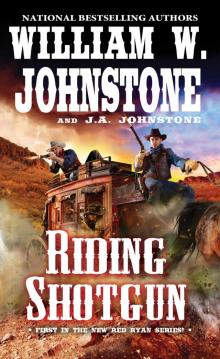 Riding Shotgun
Riding Shotgun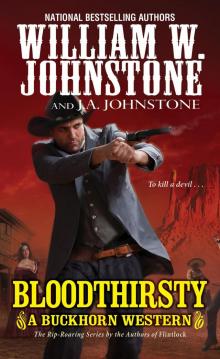 Bloodthirsty
Bloodthirsty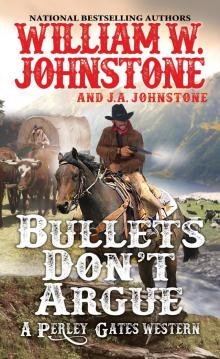 Bullets Don't Argue
Bullets Don't Argue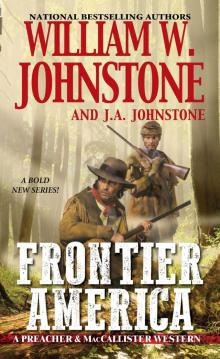 Frontier America
Frontier America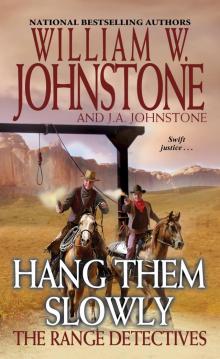 Hang Them Slowly
Hang Them Slowly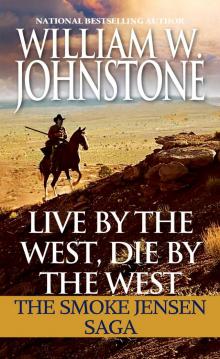 Live by the West, Die by the West
Live by the West, Die by the West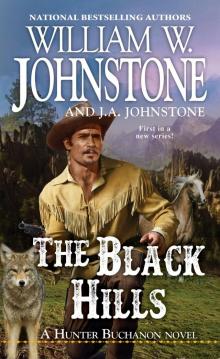 The Black Hills
The Black Hills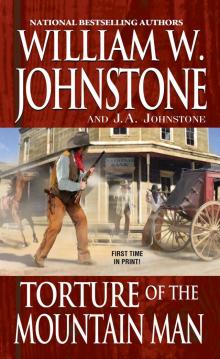 Torture of the Mountain Man
Torture of the Mountain Man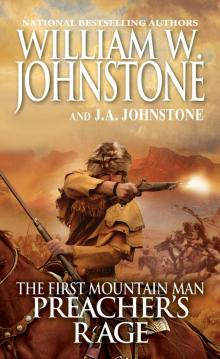 Preacher's Rage
Preacher's Rage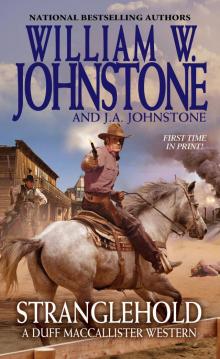 Stranglehold
Stranglehold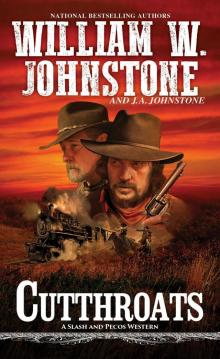 Cutthroats
Cutthroats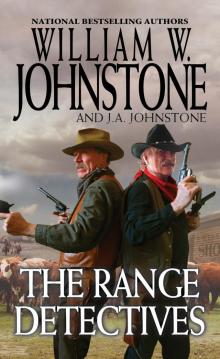 The Range Detectives
The Range Detectives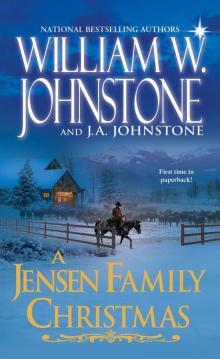 A Jensen Family Christmas
A Jensen Family Christmas Have Brides, Will Travel
Have Brides, Will Travel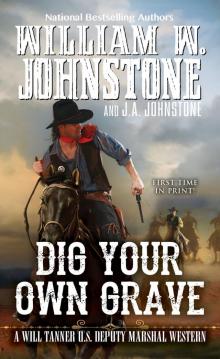 Dig Your Own Grave
Dig Your Own Grave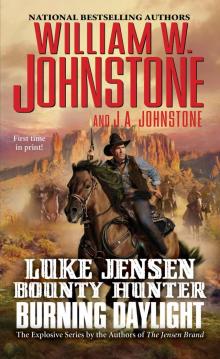 Burning Daylight
Burning Daylight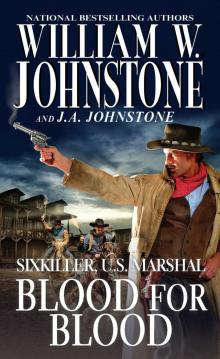 Blood for Blood
Blood for Blood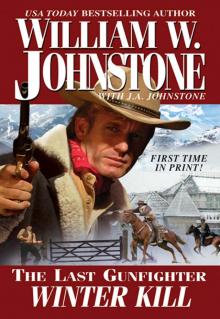 Winter Kill
Winter Kill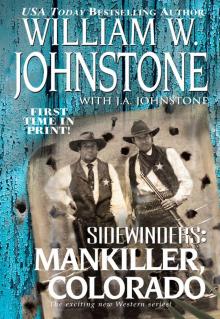 Mankiller, Colorado
Mankiller, Colorado Preacher's Massacre
Preacher's Massacre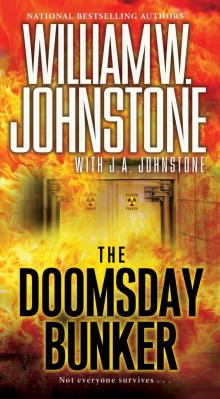 The Doomsday Bunker
The Doomsday Bunker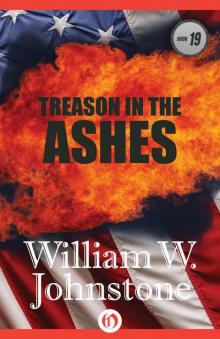 Treason in the Ashes
Treason in the Ashes MacCallister, The Eagles Legacy: The Killing
MacCallister, The Eagles Legacy: The Killing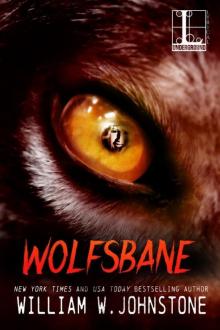 Wolfsbane
Wolfsbane Danger in the Ashes
Danger in the Ashes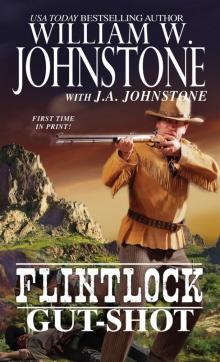 Gut-Shot
Gut-Shot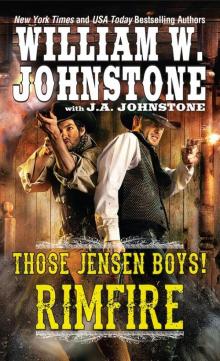 Rimfire
Rimfire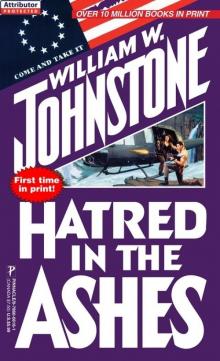 Hatred in the Ashes
Hatred in the Ashes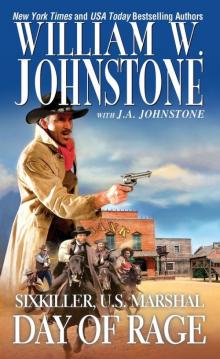 Day of Rage
Day of Rage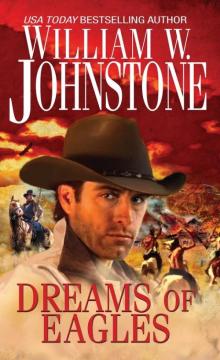 Dreams of Eagles
Dreams of Eagles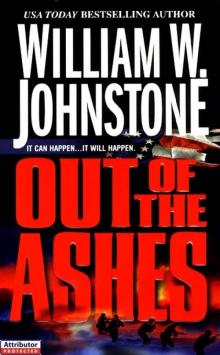 Out of the Ashes
Out of the Ashes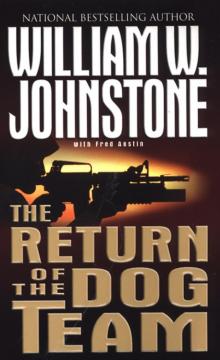 The Return Of Dog Team
The Return Of Dog Team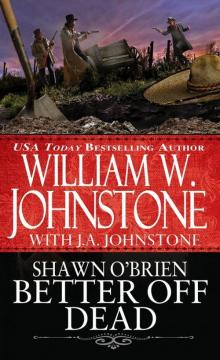 Better Off Dead
Better Off Dead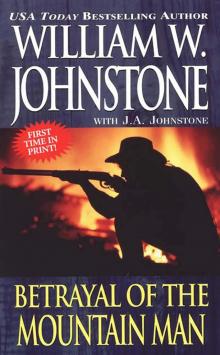 Betrayal of the Mountain Man
Betrayal of the Mountain Man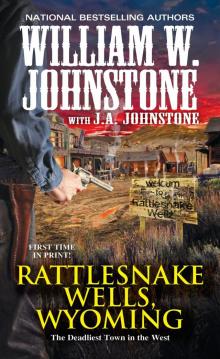 Rattlesnake Wells, Wyoming
Rattlesnake Wells, Wyoming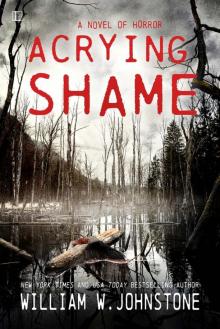 A Crying Shame
A Crying Shame The Devil's Touch
The Devil's Touch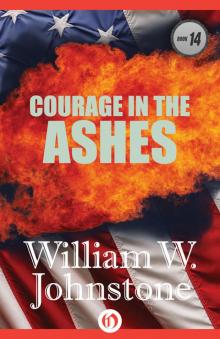 Courage In The Ashes
Courage In The Ashes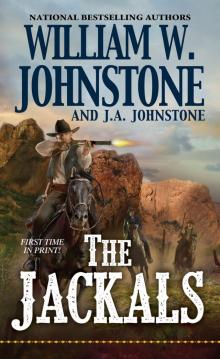 The Jackals
The Jackals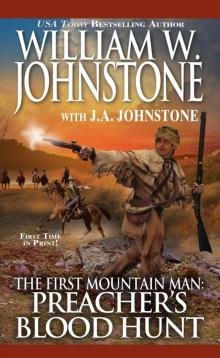 Preacher's Blood Hunt
Preacher's Blood Hunt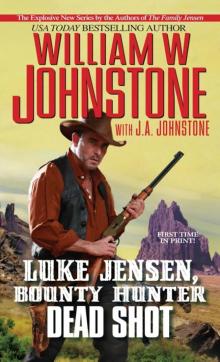 Luke Jensen Bounty Hunter Dead Shot
Luke Jensen Bounty Hunter Dead Shot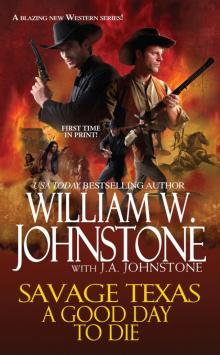 A Good Day to Die
A Good Day to Die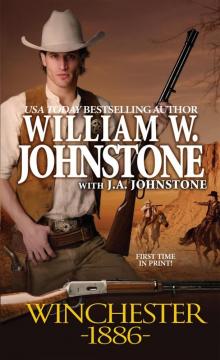 Winchester 1886
Winchester 1886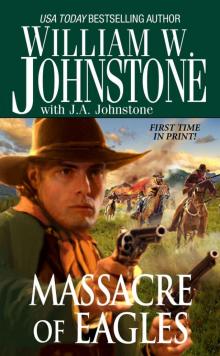 Massacre of Eagles
Massacre of Eagles A Colorado Christmas
A Colorado Christmas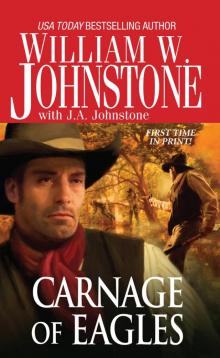 Carnage of Eagles
Carnage of Eagles The Family Jensen # 1
The Family Jensen # 1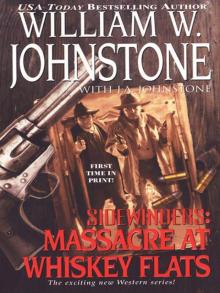 Sidewinders#2 Massacre At Whiskey Flats
Sidewinders#2 Massacre At Whiskey Flats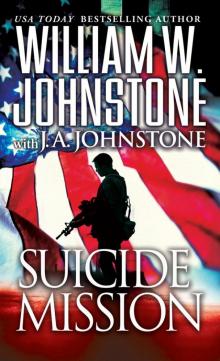 Suicide Mission
Suicide Mission Preacher and the Mountain Caesar
Preacher and the Mountain Caesar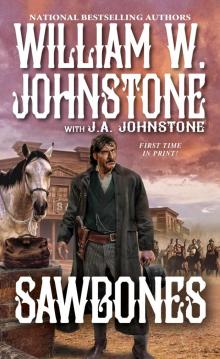 Sawbones
Sawbones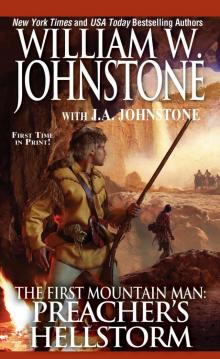 Preacher's Hell Storm
Preacher's Hell Storm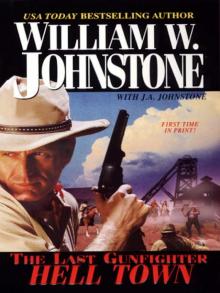 The Last Gunfighter: Hell Town
The Last Gunfighter: Hell Town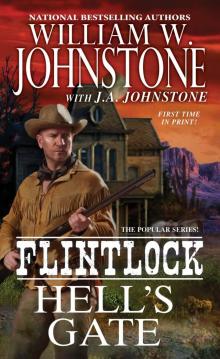 Hell's Gate
Hell's Gate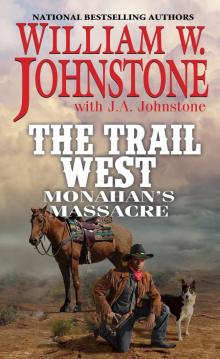 Monahan's Massacre
Monahan's Massacre Code of the Mountain Man
Code of the Mountain Man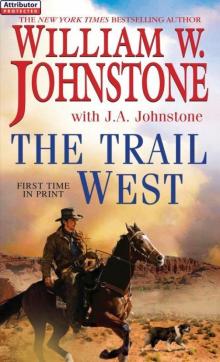 The Trail West
The Trail West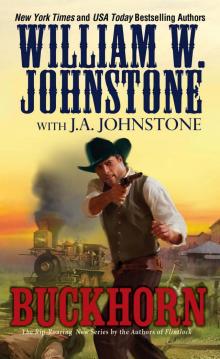 Buckhorn
Buckhorn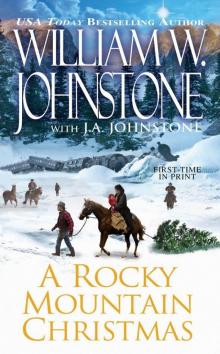 A Rocky Mountain Christmas
A Rocky Mountain Christmas Darkly The Thunder
Darkly The Thunder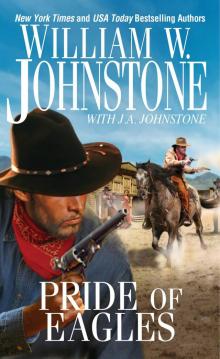 Pride of Eagles
Pride of Eagles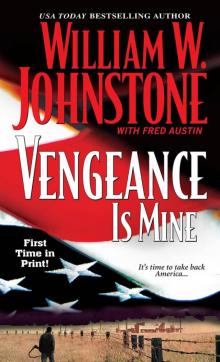 Vengeance Is Mine
Vengeance Is Mine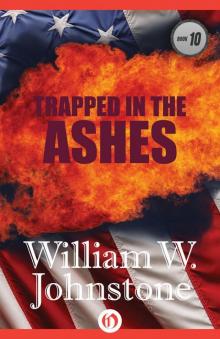 Trapped in the Ashes
Trapped in the Ashes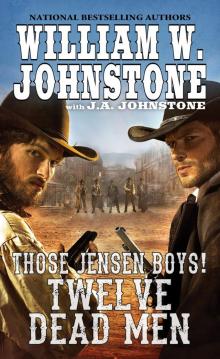 Twelve Dead Men
Twelve Dead Men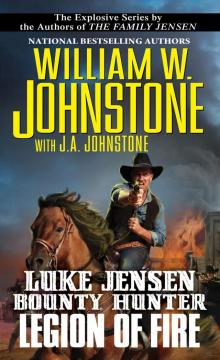 Legion of Fire
Legion of Fire Honor of the Mountain Man
Honor of the Mountain Man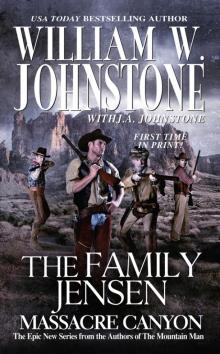 Massacre Canyon
Massacre Canyon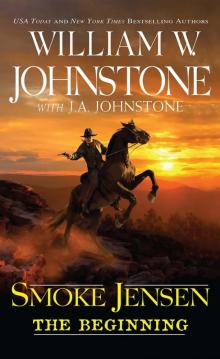 Smoke Jensen, the Beginning
Smoke Jensen, the Beginning Song of Eagles
Song of Eagles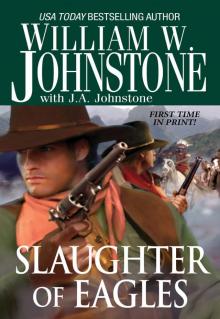 Slaughter of Eagles
Slaughter of Eagles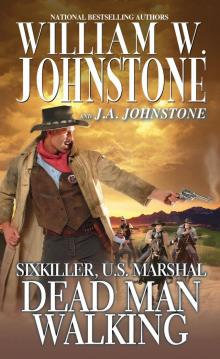 Dead Man Walking
Dead Man Walking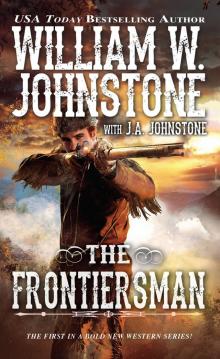 The Frontiersman
The Frontiersman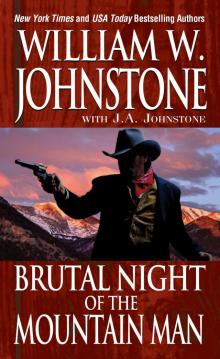 Brutal Night of the Mountain Man
Brutal Night of the Mountain Man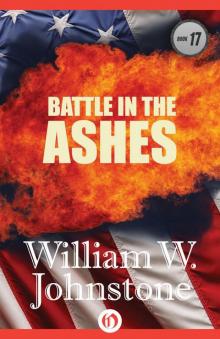 Battle in the Ashes
Battle in the Ashes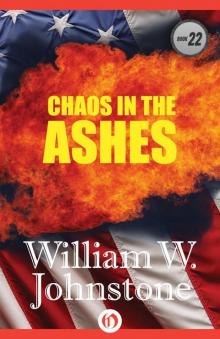 Chaos in the Ashes
Chaos in the Ashes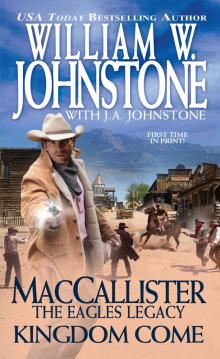 MacCallister Kingdom Come
MacCallister Kingdom Come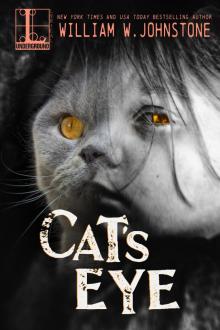 Cat's Eye
Cat's Eye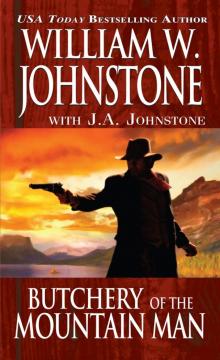 Butchery of the Mountain Man
Butchery of the Mountain Man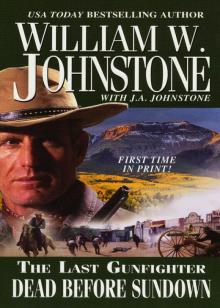 Dead Before Sundown
Dead Before Sundown Tyranny in the Ashes
Tyranny in the Ashes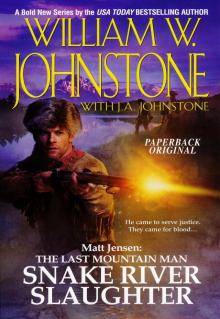 Snake River Slaughter
Snake River Slaughter A Time to Slaughter
A Time to Slaughter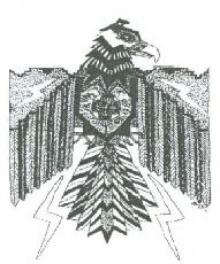 The Last of the Dogteam
The Last of the Dogteam Massacre at Powder River
Massacre at Powder River Sidewinders
Sidewinders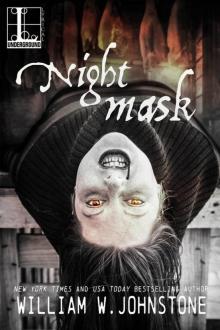 Night Mask
Night Mask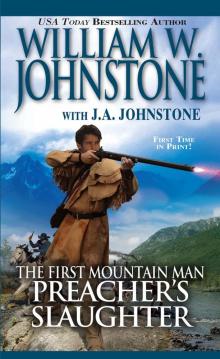 Preacher's Slaughter
Preacher's Slaughter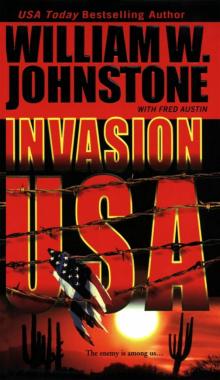 Invasion USA
Invasion USA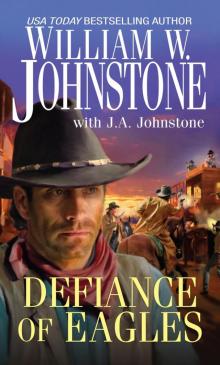 Defiance of Eagles
Defiance of Eagles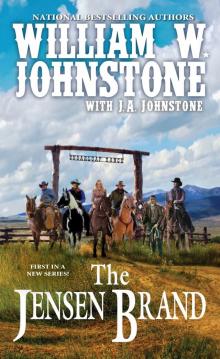 The Jensen Brand
The Jensen Brand Frontier of Violence
Frontier of Violence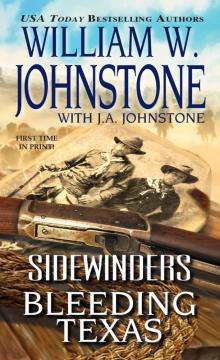 Bleeding Texas
Bleeding Texas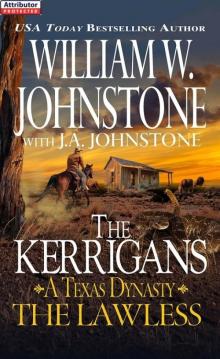 The Lawless
The Lawless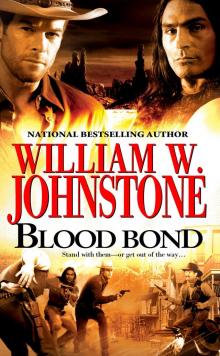 Blood Bond
Blood Bond MacCallister: The Eagles Legacy: The Killing
MacCallister: The Eagles Legacy: The Killing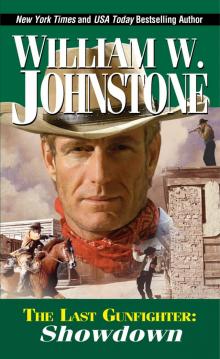 Showdown
Showdown The Legend of Perley Gates
The Legend of Perley Gates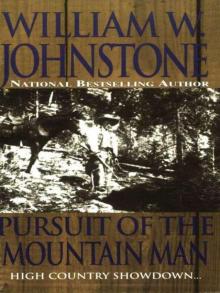 Pursuit Of The Mountain Man
Pursuit Of The Mountain Man Scream of Eagles
Scream of Eagles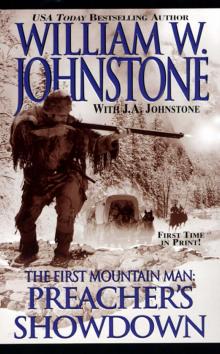 Preacher's Showdown
Preacher's Showdown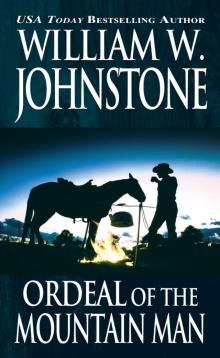 Ordeal of the Mountain Man
Ordeal of the Mountain Man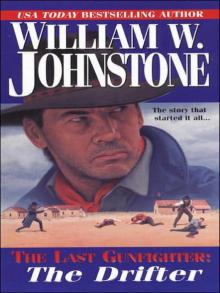 The Last Gunfighter: The Drifter
The Last Gunfighter: The Drifter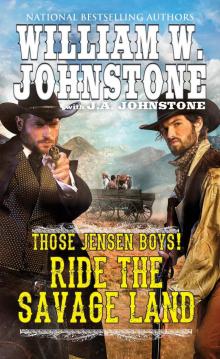 Ride the Savage Land
Ride the Savage Land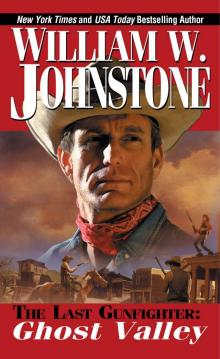 Ghost Valley
Ghost Valley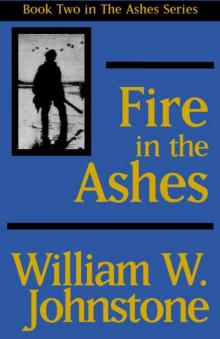 Fire in the Ashes
Fire in the Ashes Matt Jensen, The Last Mountain Man The Eyes of Texas
Matt Jensen, The Last Mountain Man The Eyes of Texas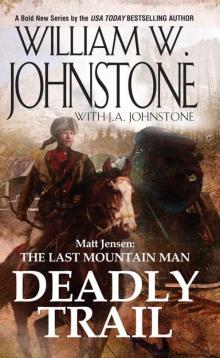 Deadly Trail
Deadly Trail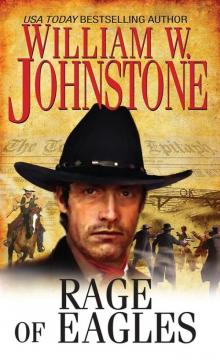 Rage of Eagles
Rage of Eagles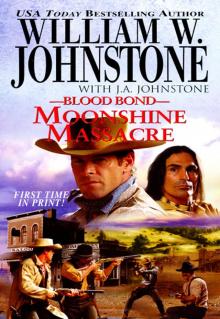 Moonshine Massacre
Moonshine Massacre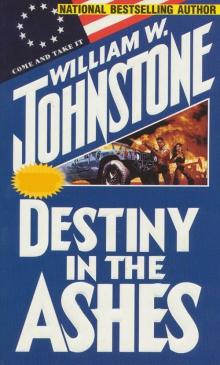 Destiny in the Ashes
Destiny in the Ashes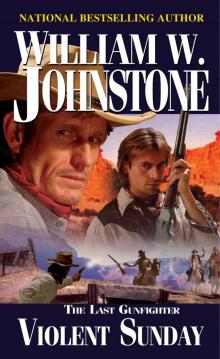 Violent Sunday
Violent Sunday Alone in the Ashes ta-5
Alone in the Ashes ta-5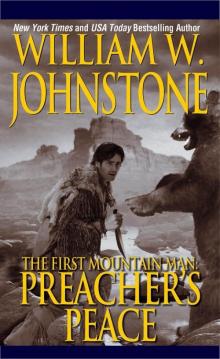 Preacher's Peace
Preacher's Peace Preacher's Pursuit (The First Mountain Man)
Preacher's Pursuit (The First Mountain Man)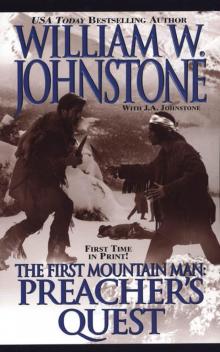 Preacher's Quest
Preacher's Quest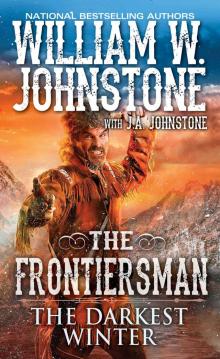 The Darkest Winter
The Darkest Winter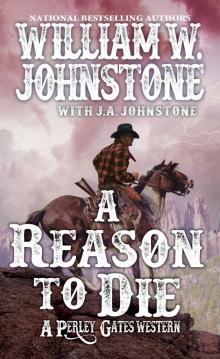 A Reason to Die
A Reason to Die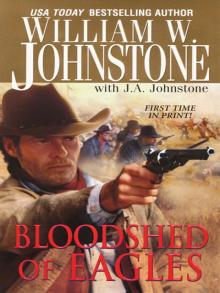 Bloodshed of Eagles
Bloodshed of Eagles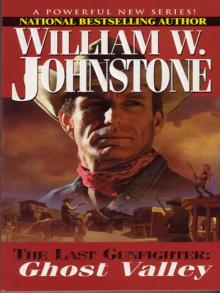 The Last Gunfighter: Ghost Valley
The Last Gunfighter: Ghost Valley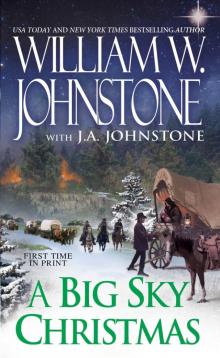 A Big Sky Christmas
A Big Sky Christmas Hang Him Twice
Hang Him Twice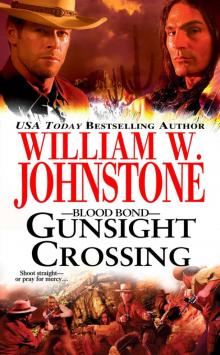 Blood Bond 3
Blood Bond 3 Seven Days to Hell
Seven Days to Hell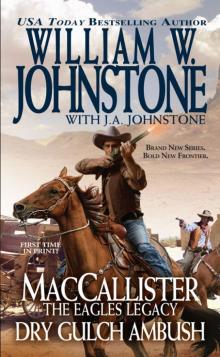 MacCallister, the Eagles Legacy: Dry Gulch Ambush
MacCallister, the Eagles Legacy: Dry Gulch Ambush The Last Gunfighter
The Last Gunfighter Brotherhood of the Gun
Brotherhood of the Gun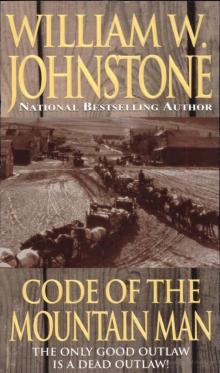 Code of the Mountain Man tlmm-8
Code of the Mountain Man tlmm-8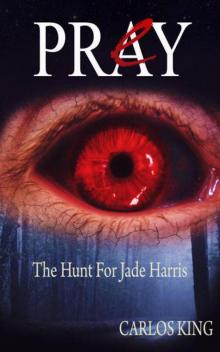 Prey
Prey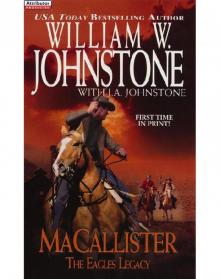 MacAllister
MacAllister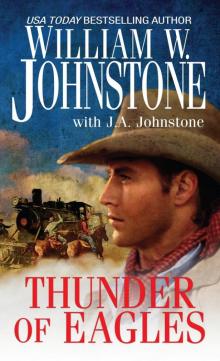 Thunder of Eagles
Thunder of Eagles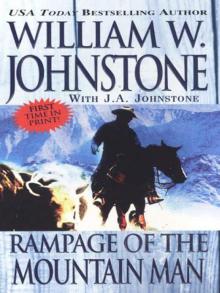 Rampage of the Mountain Man
Rampage of the Mountain Man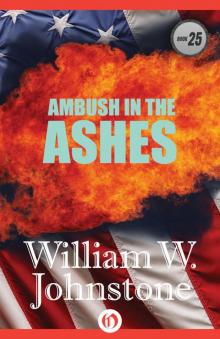 Ambush in the Ashes
Ambush in the Ashes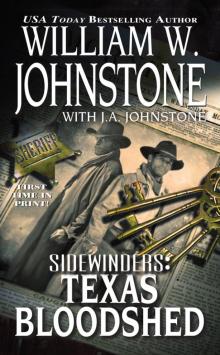 Texas Bloodshed s-6
Texas Bloodshed s-6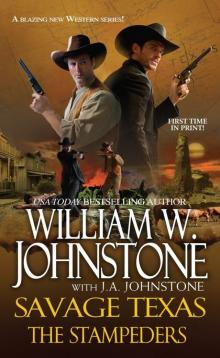 Savage Texas: The Stampeders
Savage Texas: The Stampeders Sixkiller, U.S. Marshal
Sixkiller, U.S. Marshal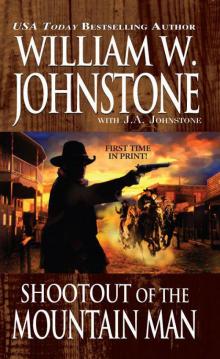 Shootout of the Mountain Man
Shootout of the Mountain Man Damnation Valley
Damnation Valley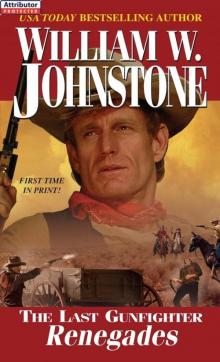 Renegades
Renegades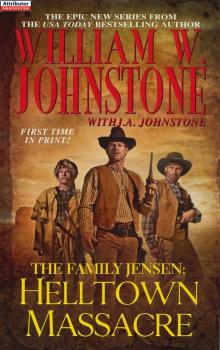 The Family Jensen
The Family Jensen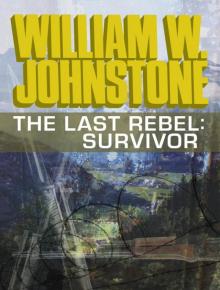 The Last Rebel: Survivor
The Last Rebel: Survivor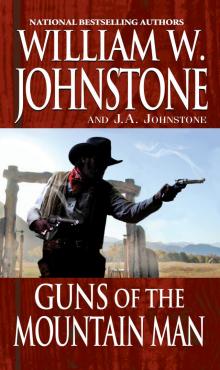 Guns of the Mountain Man
Guns of the Mountain Man Blood in the Ashes ta-4
Blood in the Ashes ta-4 A Time for Vultures
A Time for Vultures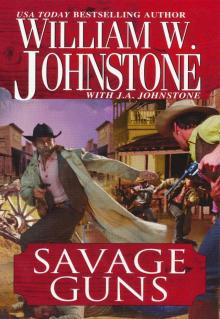 Savage Guns
Savage Guns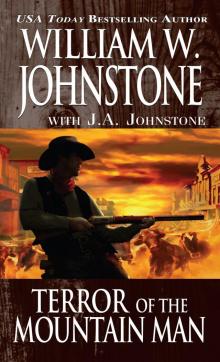 Terror of the Mountain Man
Terror of the Mountain Man Phoenix Rising:
Phoenix Rising: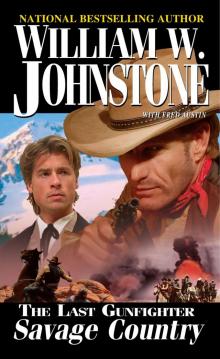 Savage Country
Savage Country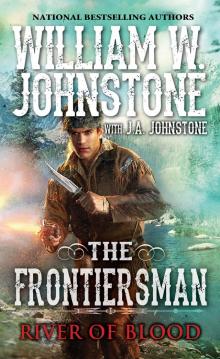 River of Blood
River of Blood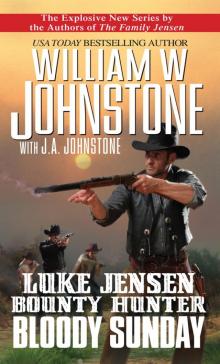 Bloody Sunday
Bloody Sunday Vengeance in the Ashes
Vengeance in the Ashes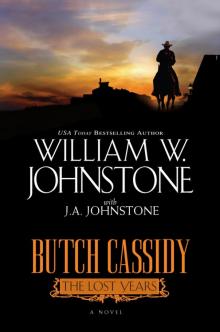 Butch Cassidy the Lost Years
Butch Cassidy the Lost Years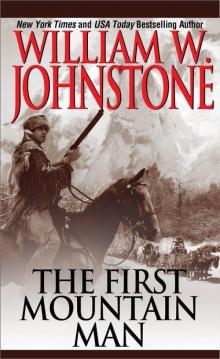 The First Mountain Man
The First Mountain Man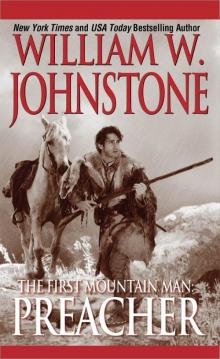 Preacher
Preacher Heart of the Mountain Man
Heart of the Mountain Man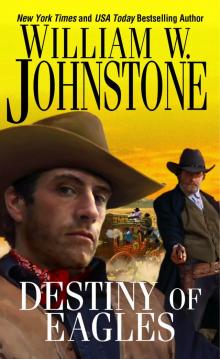 Destiny of Eagles
Destiny of Eagles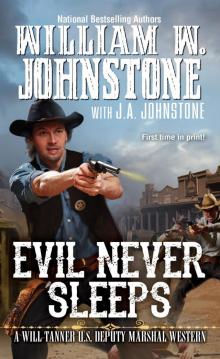 Evil Never Sleeps
Evil Never Sleeps The Devil's Legion
The Devil's Legion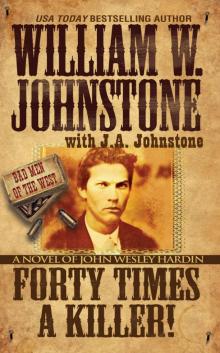 Forty Times a Killer
Forty Times a Killer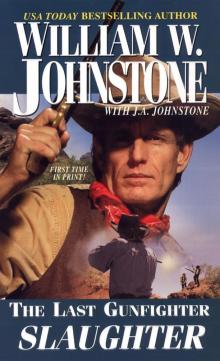 Slaughter
Slaughter Day of Independence
Day of Independence Betrayal in the Ashes
Betrayal in the Ashes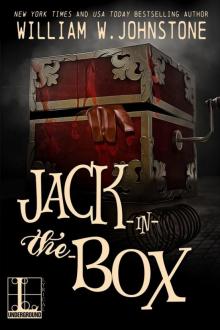 Jack-in-the-Box
Jack-in-the-Box Will Tanner
Will Tanner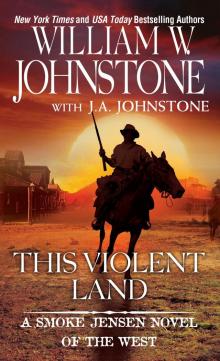 This Violent Land
This Violent Land Behind the Iron
Behind the Iron Blood in the Ashes
Blood in the Ashes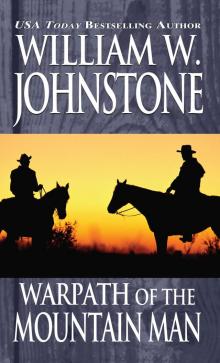 Warpath of the Mountain Man
Warpath of the Mountain Man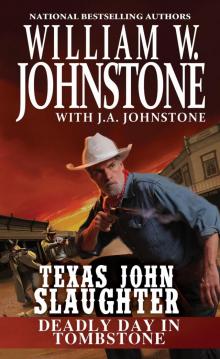 Deadly Day in Tombstone
Deadly Day in Tombstone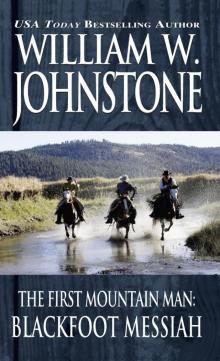 Blackfoot Messiah
Blackfoot Messiah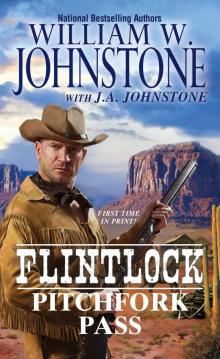 Pitchfork Pass
Pitchfork Pass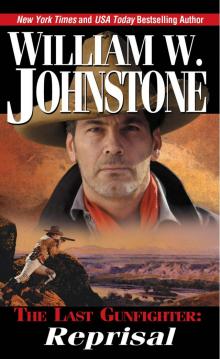 Reprisal
Reprisal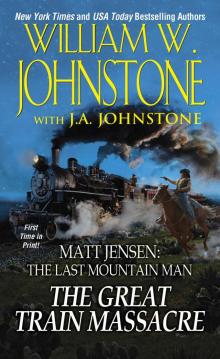 The Great Train Massacre
The Great Train Massacre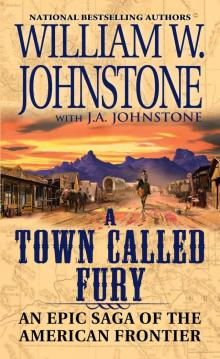 A Town Called Fury
A Town Called Fury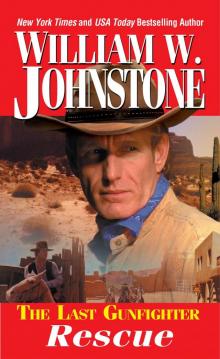 Rescue
Rescue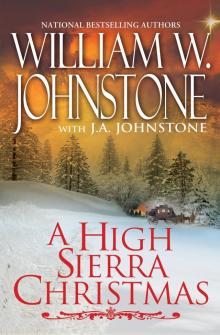 A High Sierra Christmas
A High Sierra Christmas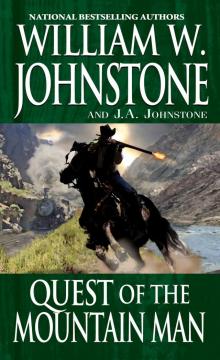 Quest of the Mountain Man
Quest of the Mountain Man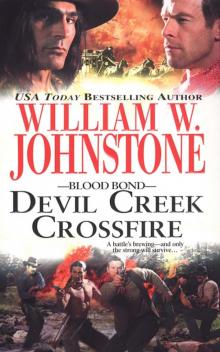 Blood Bond 5
Blood Bond 5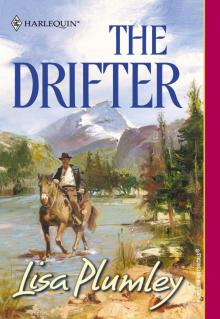 The Drifter
The Drifter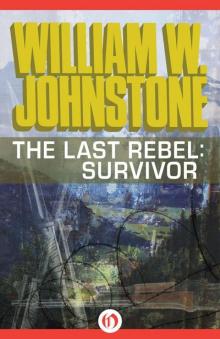 Survivor (The Ashes Book 36)
Survivor (The Ashes Book 36)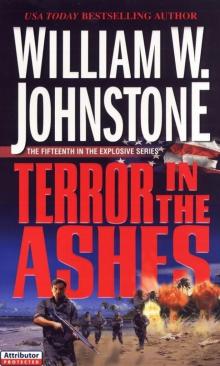 Terror in the Ashes
Terror in the Ashes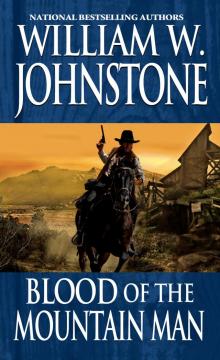 Blood of the Mountain Man
Blood of the Mountain Man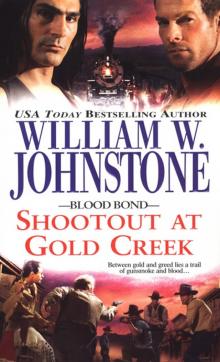 Blood Bond 7
Blood Bond 7 Cheyenne Challenge
Cheyenne Challenge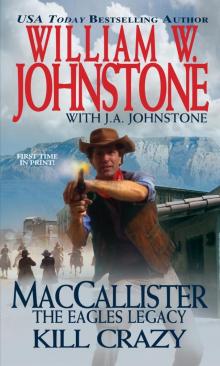 Kill Crazy
Kill Crazy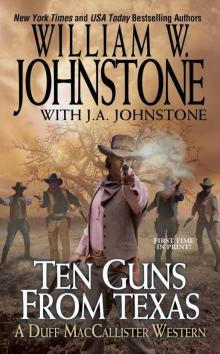 Ten Guns from Texas
Ten Guns from Texas Preacher's Fortune
Preacher's Fortune Preacher's Kill
Preacher's Kill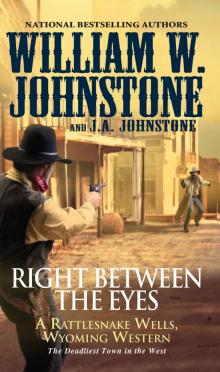 Right between the Eyes
Right between the Eyes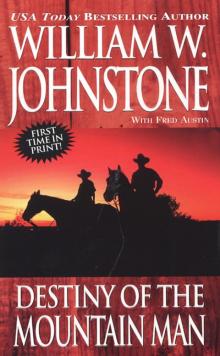 Destiny Of The Mountain Man
Destiny Of The Mountain Man Rockabilly Hell
Rockabilly Hell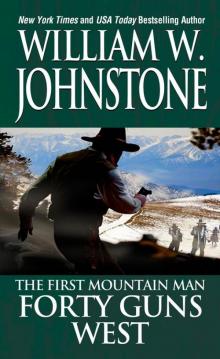 Forty Guns West
Forty Guns West Hour of Death
Hour of Death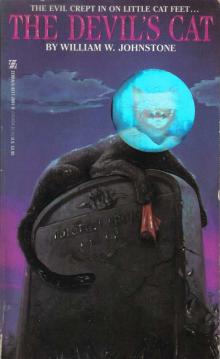 The Devil's Cat
The Devil's Cat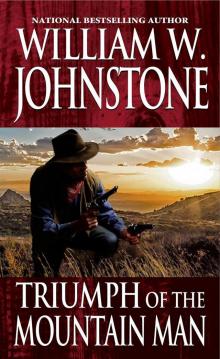 Triumph of the Mountain Man
Triumph of the Mountain Man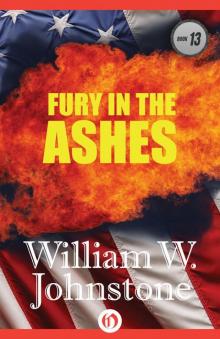 Fury in the Ashes
Fury in the Ashes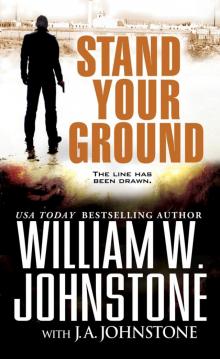 Stand Your Ground
Stand Your Ground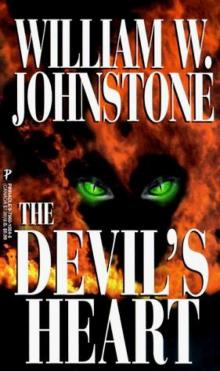 The Devil's Heart
The Devil's Heart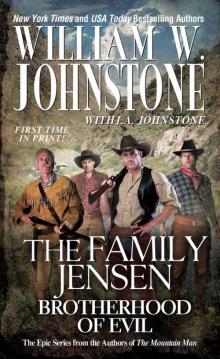 Brotherhood of Evil
Brotherhood of Evil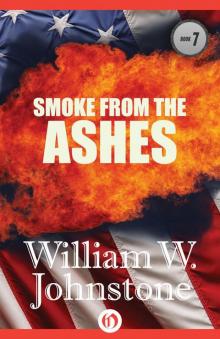 Smoke from the Ashes
Smoke from the Ashes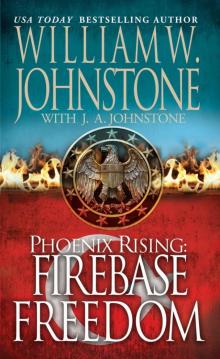 Firebase Freedom
Firebase Freedom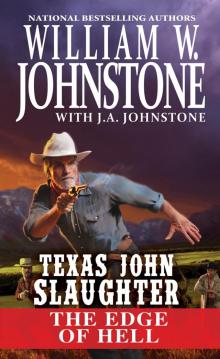 The Edge of Hell
The Edge of Hell Bats
Bats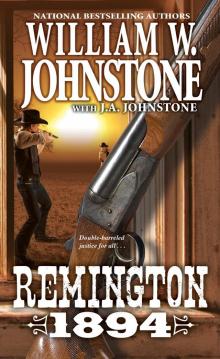 Remington 1894
Remington 1894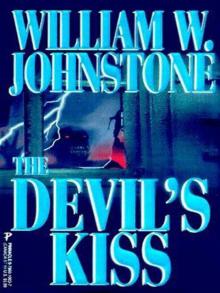 Devil's Kiss d-1
Devil's Kiss d-1 Watchers in the Woods
Watchers in the Woods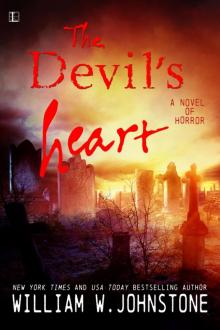 Devil's Heart
Devil's Heart A Dangerous Man
A Dangerous Man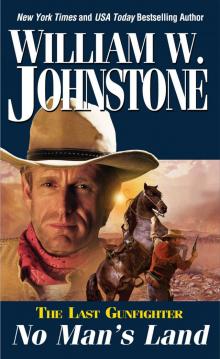 No Man's Land
No Man's Land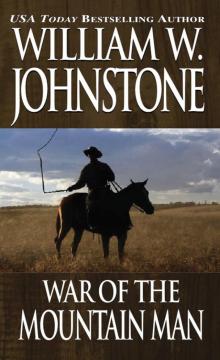 War of the Mountain Man
War of the Mountain Man Hunted
Hunted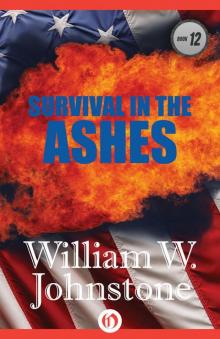 Survival in the Ashes
Survival in the Ashes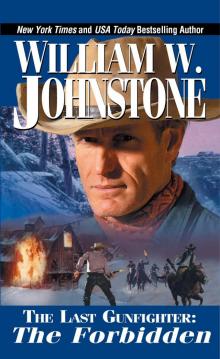 The Forbidden
The Forbidden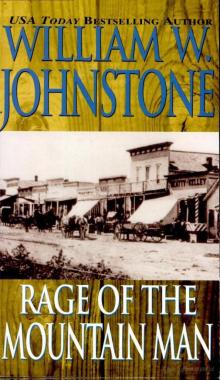 Rage of the Mountain Man
Rage of the Mountain Man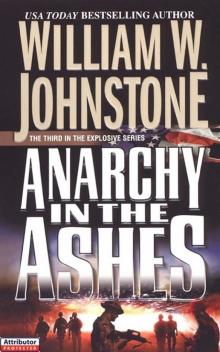 Anarchy in the Ashes
Anarchy in the Ashes Those Jensen Boys!
Those Jensen Boys!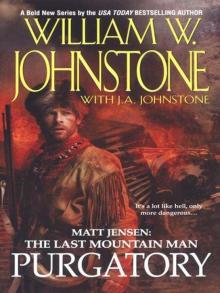 Matt Jensen: The Last Mountain Man Purgatory
Matt Jensen: The Last Mountain Man Purgatory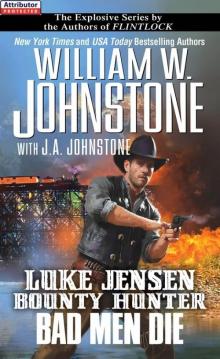 Bad Men Die
Bad Men Die Blood Valley
Blood Valley Carnival
Carnival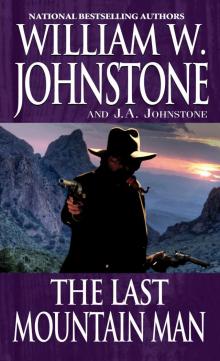 The Last Mountain Man
The Last Mountain Man Talons of Eagles
Talons of Eagles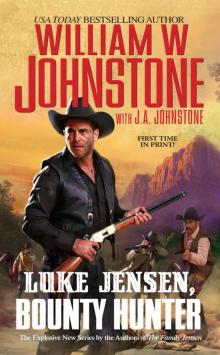 Bounty Hunter lj-1
Bounty Hunter lj-1 Rockabilly Limbo
Rockabilly Limbo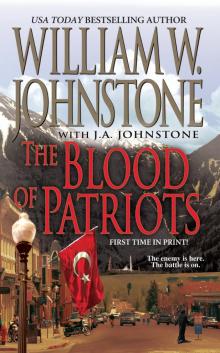 The Blood of Patriots
The Blood of Patriots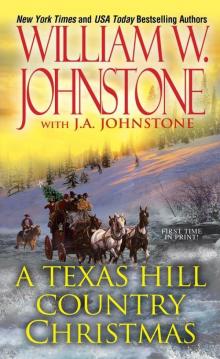 A Texas Hill Country Christmas
A Texas Hill Country Christmas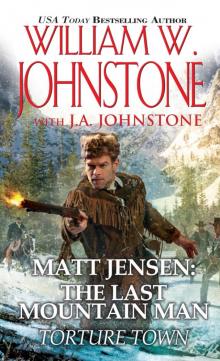 Torture Town
Torture Town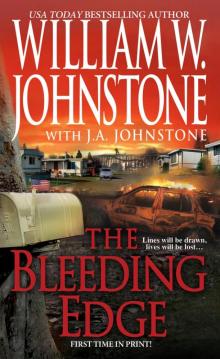 The Bleeding Edge
The Bleeding Edge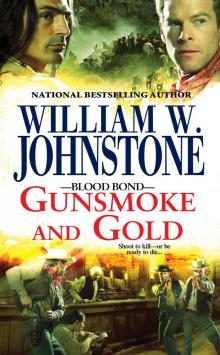 Gunsmoke and Gold
Gunsmoke and Gold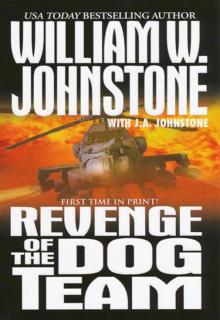 Revenge of the Dog Team
Revenge of the Dog Team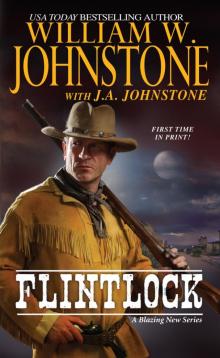 Flintlock
Flintlock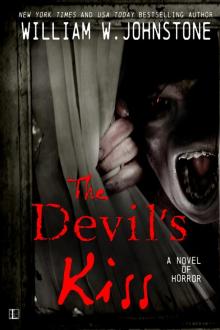 Devil's Kiss
Devil's Kiss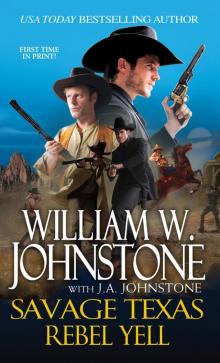 Rebel Yell
Rebel Yell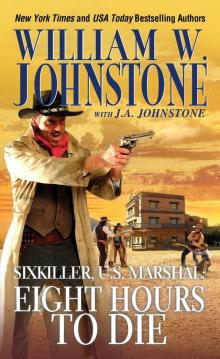 Eight Hours to Die
Eight Hours to Die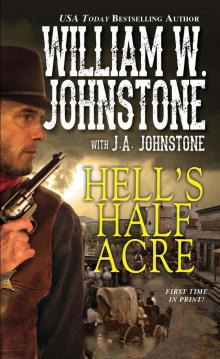 Hell's Half Acre
Hell's Half Acre Revenge of the Mountain Man
Revenge of the Mountain Man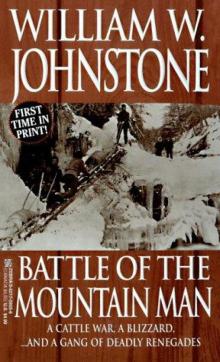 Battle of the Mountain Man
Battle of the Mountain Man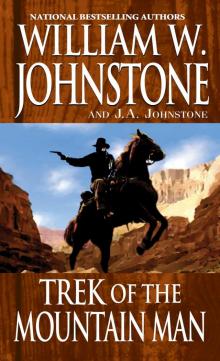 Trek of the Mountain Man
Trek of the Mountain Man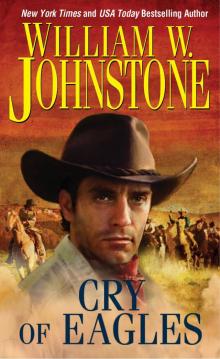 Cry of Eagles
Cry of Eagles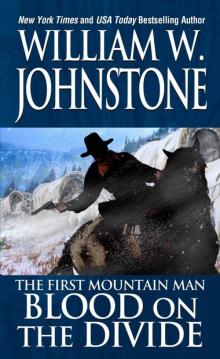 Blood on the Divide
Blood on the Divide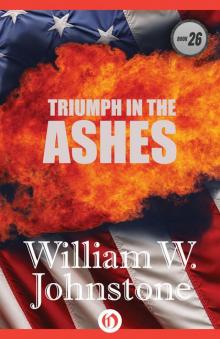 Triumph in the Ashes
Triumph in the Ashes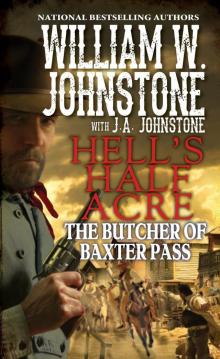 The Butcher of Baxter Pass
The Butcher of Baxter Pass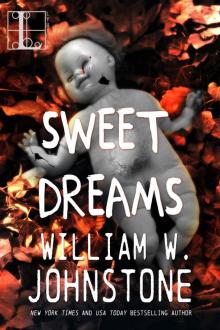 Sweet Dreams
Sweet Dreams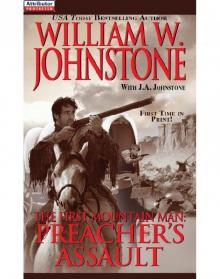 Preacher's Assault
Preacher's Assault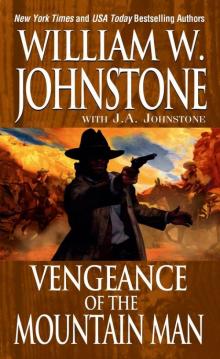 Vengeance of the Mountain Man
Vengeance of the Mountain Man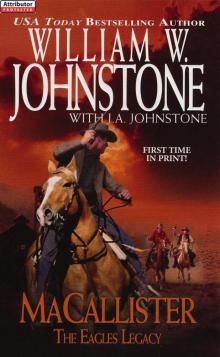 MacCallister: The Eagles Legacy
MacCallister: The Eagles Legacy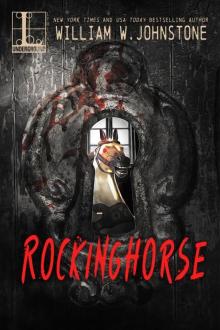 Rockinghorse
Rockinghorse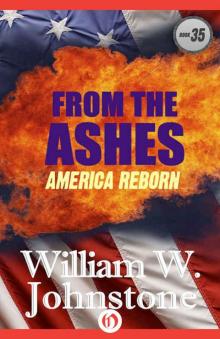 From The Ashes: America Reborn
From The Ashes: America Reborn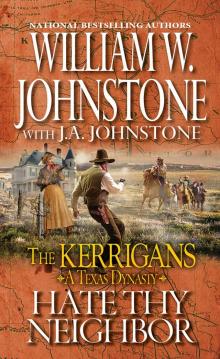 Hate Thy Neighbor
Hate Thy Neighbor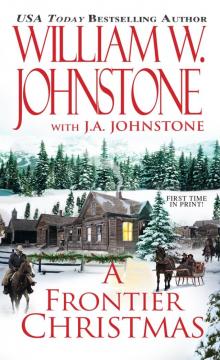 A Frontier Christmas
A Frontier Christmas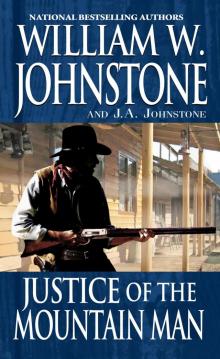 Justice of the Mountain Man
Justice of the Mountain Man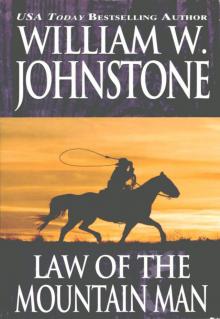 Law of the Mountain Man
Law of the Mountain Man Matt Jensen, The Last Mountain Man
Matt Jensen, The Last Mountain Man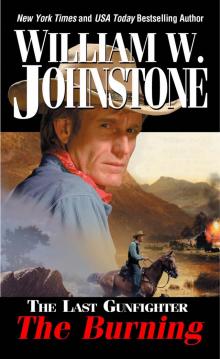 Burning
Burning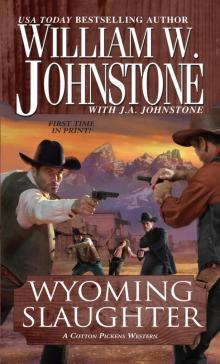 Wyoming Slaughter
Wyoming Slaughter Return of the Mountain Man
Return of the Mountain Man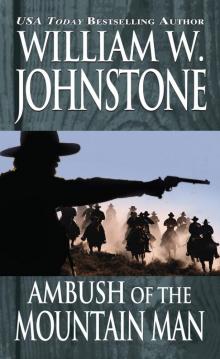 Ambush of the Mountain Man
Ambush of the Mountain Man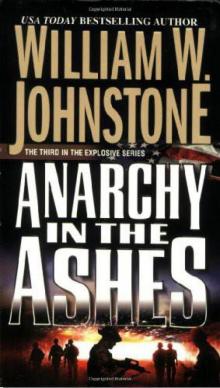 Anarchy in the Ashes ta-3
Anarchy in the Ashes ta-3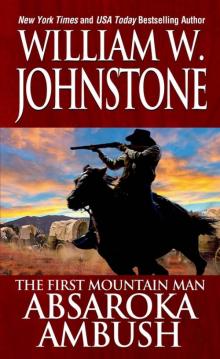 Absaroka Ambush
Absaroka Ambush Texas Bloodshed
Texas Bloodshed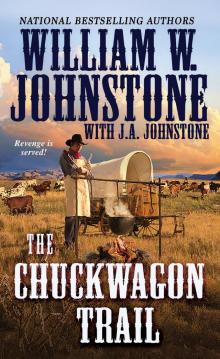 The Chuckwagon Trail
The Chuckwagon Trail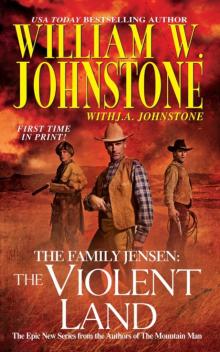 The Violent Land
The Violent Land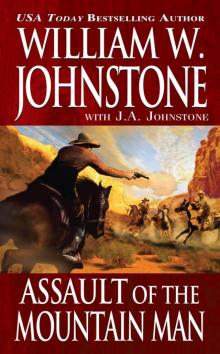 Assault of the Mountain Man
Assault of the Mountain Man Ride for Vengeance
Ride for Vengeance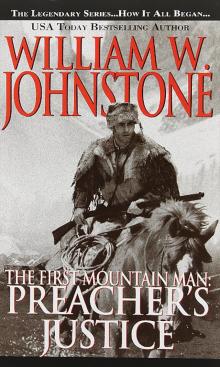 Preacher's Justice
Preacher's Justice Manhunt
Manhunt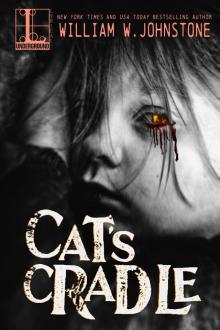 Cat's Cradle
Cat's Cradle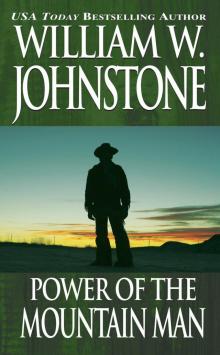 Power of the Mountain Man
Power of the Mountain Man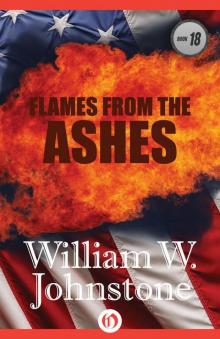 Flames from the Ashes
Flames from the Ashes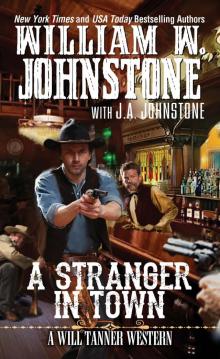 A Stranger in Town
A Stranger in Town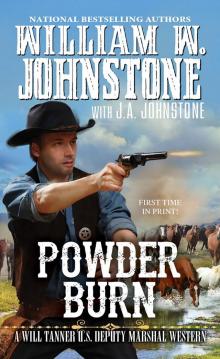 Powder Burn
Powder Burn Trail of the Mountain Man
Trail of the Mountain Man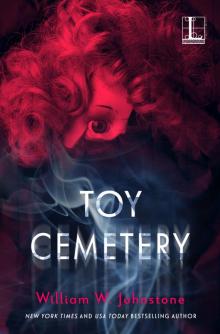 Toy Cemetery
Toy Cemetery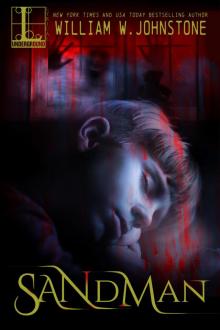 Sandman
Sandman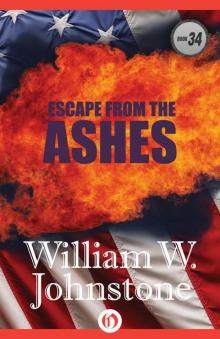 Escape from the Ashes
Escape from the Ashes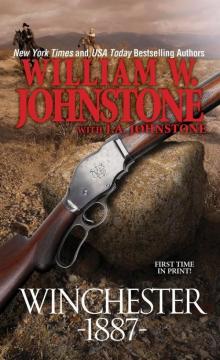 Winchester 1887
Winchester 1887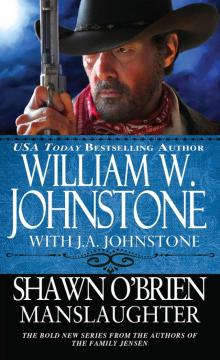 Shawn O'Brien Manslaughter
Shawn O'Brien Manslaughter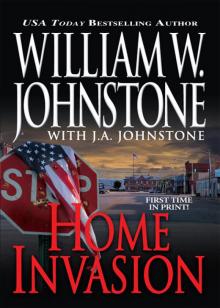 Home Invasion
Home Invasion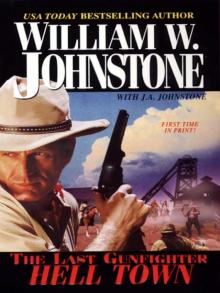 Hell Town
Hell Town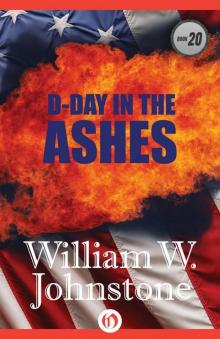 D-Day in the Ashes
D-Day in the Ashes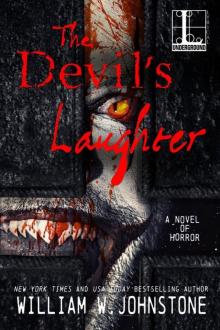 The Devil's Laughter
The Devil's Laughter An Arizona Christmas
An Arizona Christmas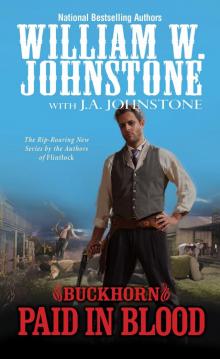 Paid in Blood
Paid in Blood Crisis in the Ashes
Crisis in the Ashes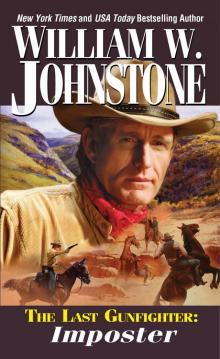 Imposter
Imposter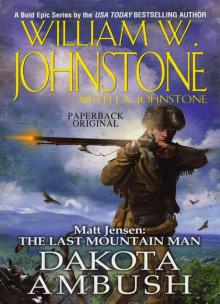 Dakota Ambush
Dakota Ambush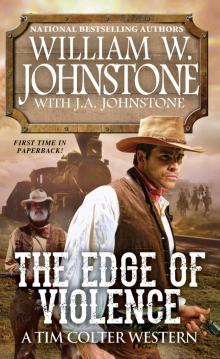 The Edge of Violence
The Edge of Violence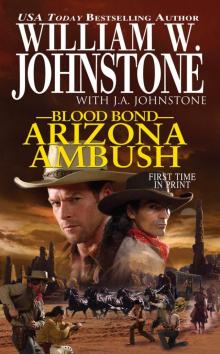 Arizona Ambush
Arizona Ambush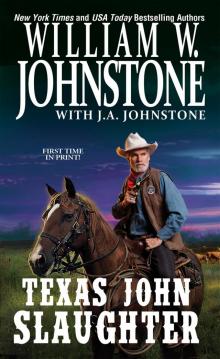 Texas John Slaughter
Texas John Slaughter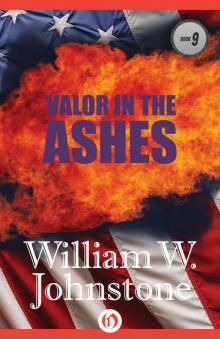 Valor in the Ashes
Valor in the Ashes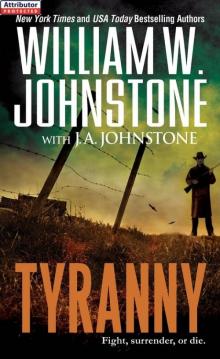 Tyranny
Tyranny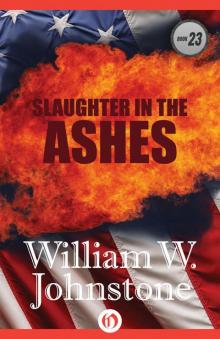 Slaughter in the Ashes
Slaughter in the Ashes Warriors from the Ashes
Warriors from the Ashes Venom of the Mountain Man
Venom of the Mountain Man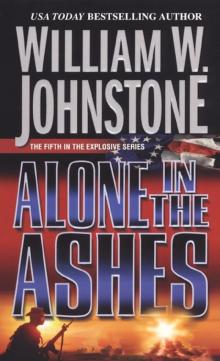 Alone in the Ashes
Alone in the Ashes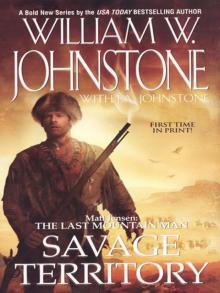 Matt Jensen, The Last Mountain Man Savage Territory
Matt Jensen, The Last Mountain Man Savage Territory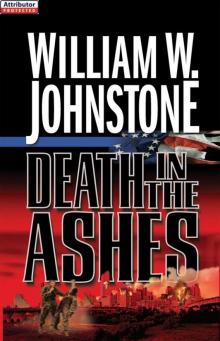 Death in the Ashes
Death in the Ashes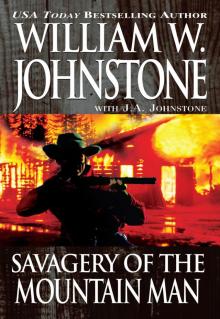 Savagery of The Mountain Man
Savagery of The Mountain Man A Lone Star Christmas
A Lone Star Christmas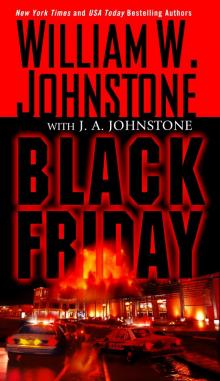 Black Friday
Black Friday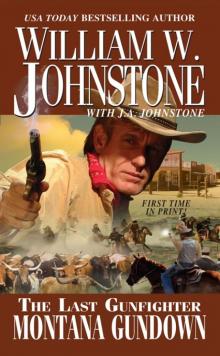 Montana Gundown
Montana Gundown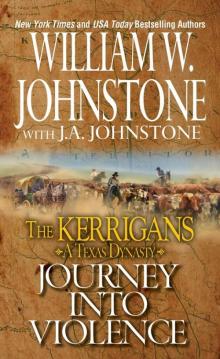 Journey into Violence
Journey into Violence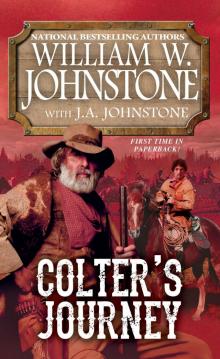 Colter's Journey
Colter's Journey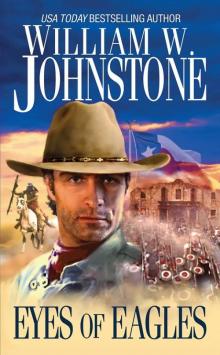 Eyes of Eagles
Eyes of Eagles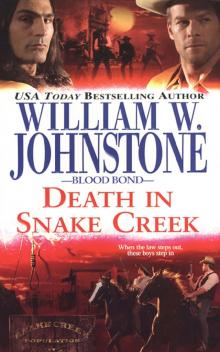 Blood Bond 9
Blood Bond 9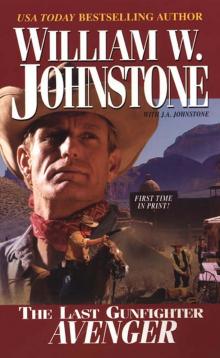 Avenger
Avenger Black Ops #1
Black Ops #1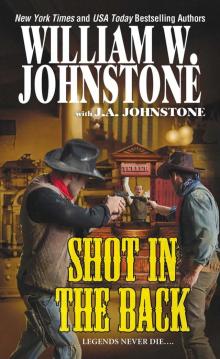 Shot in the Back
Shot in the Back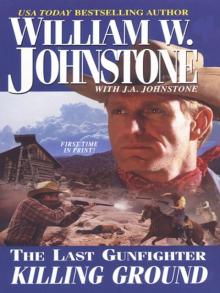 The Last Gunfighter: Killing Ground
The Last Gunfighter: Killing Ground Preacher's Fire
Preacher's Fire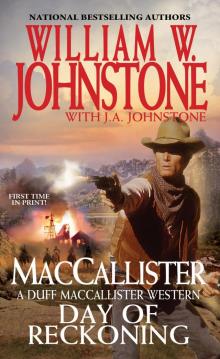 Day of Reckoning
Day of Reckoning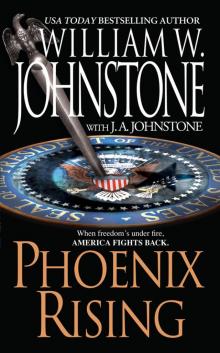 Phoenix Rising pr-1
Phoenix Rising pr-1 Blood of Eagles
Blood of Eagles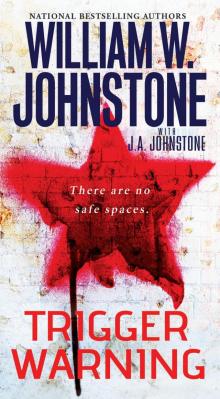 Trigger Warning
Trigger Warning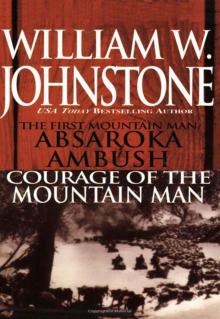 Absaroka Ambush (first Mt Man)/Courage Of The Mt Man
Absaroka Ambush (first Mt Man)/Courage Of The Mt Man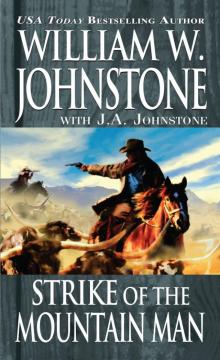 Strike of the Mountain Man
Strike of the Mountain Man